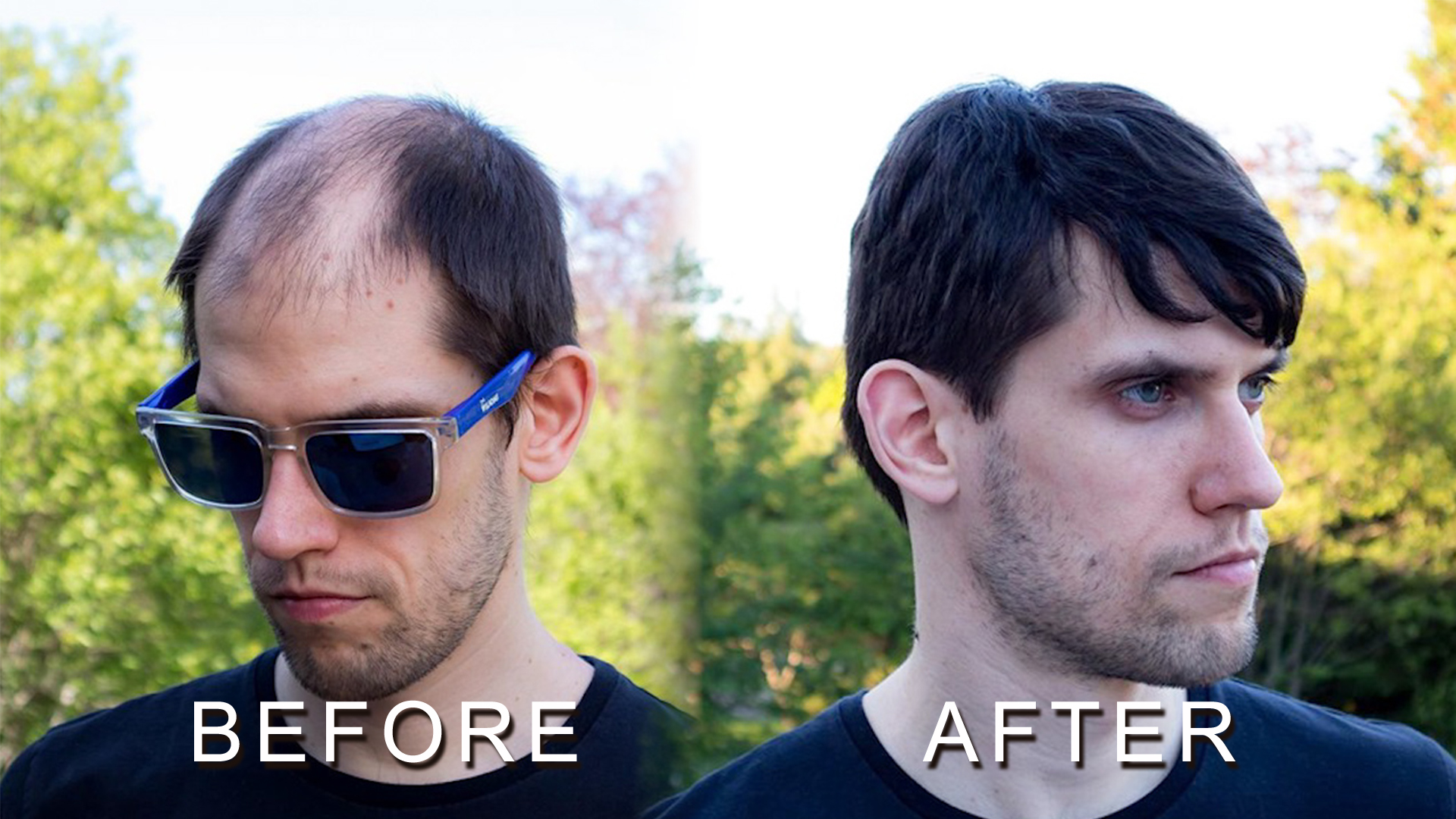
One of the most highly demanded permanent hair restoration solutions has been hair transplants with natural appearance and lasting effects. Nonetheless, similar to any medical procedure, all hair transplant side effects, which every patient needs to be aware of, come with it. Whether the swelling is just a short swell or the permanent dangers, such as scarring or uneven growth, the more you learn to expect, the better choice you are making.
In case you are considering some of the non-surgical options like quality hair systems, we will also present you with some high-quality products of LaVivid Hair that one can get ready to transform instantly without any risk to their health.
Why Choose a Hair Transplant?
Hair transplants are trendy since they involve your natural hair and are used to replace the bald or thinning areas. The hair that is growing is of the same nature; it can be styled just like your own, and it does not have to be removed. Many choose it for its:
Permanence: transplanted hair has the ability to endure a lifetime, as long as it is successful in most cases.
Natural Appearance: The Modern method has a tendency to imitate the way hair grows naturally.
Improved Confidence: Regaining your hairline could make you look better than ever.
However, it is important to consider these advantages against the potential side effects of hair transplantation, short and long term.
What Causes Side Effects of Hair Transplant?
Hair transplant side effects are typically brought on by the nature of the surgery. Your scalp is affected by incisions, follicle removal, and transplantation. The side effects are affected by factors such as:
Surgical Technique: FUT (Follicular Unit Transplantation) is associated with linear scars, whereas FUE (Follicular Unit Extraction) is associated with small circular scars.
Post-Surgery Care: Failure to take care of the hygiene or aftercare may lead to infection.
Patient Health: Diabetes, smoking, or scalp problems put people at risk.
Surgeon Skill: Poorly done transplants may cause scarring or disorganized growth of hair.
Immediate Side Effects After Hair Transplant Surgery
In the initial few days, there are some hair transplant side effects which are temporary, and they include:
Swelling and Redness: This occurs typically on the head and face, eventually resolving in 3-5 days.
Pain or Tightness: Mild pain that is being treated using painkillers.
Bleeding or Oozing: A normal reaction in the process of scalp healing.
Scabbing and Itching: Follicles of the healing process may be irritating, but must not be scratched.
Numbness: Textural symptoms of nerve numbness in the donor area.
Although they are expected, adequate care after the surgery, such as preserving the scalp and avoiding sunny days, assists in avoiding complications.
Side Effects During the Hair Transplant Recovery Period
The most important phase is the recovery phase (2-6 weeks after surgery), and some of the side effects that come with the hair transplant could manifest themselves later. These can include:
Shock Loss: This is when the transplanted hair will fall off and then start growing again.
Folliculitis: New grafts inflammation, which is usually in the form of pimples or bumps.
Prolonged Redness: Redness may take on several weeks, especially in fair skin.
Scalp Tightness: Due to the anchoring of new follicles, slight stiffness might persist.
All these side effects are mostly temporary and are easily addressed; however, they may bring emotional pressure to patients who anticipate immediate outcomes.

Long-Term Effects and Risks of Hair Transplant
Although the majority of cases recover well, some side effects of hair transplant can be acquired long-term. These are characterized by scarring, patchy growth, formation of cysts, and, in some extreme cases, permanent numbness as a result of nerve damage. Graft survival is another factor that dictates the success of a transplant; it may happen that, because of a failure of follicles to root, some areas might be left thin, necessitating another surgery.
Besides that, as natural hair keeps thinning as a person gets older, there are cases where some patients report an uneven look several years after surgery. Consistent cleaning or follow-up sessions will normally be required to maintain the natural appearance.
Hair Transplant Alternatives: Choosing Wigs
Premium wigs and hair systems make the best substitutes for those interested in having instant, non-surgical, and risk-free outcomes. They offer instant change, zero recovery period, and no medical side effects as opposed to surgery.
1. Adrian – Unprocessed European Hair System
The Adrian system involves using virgin European hair that is unprocessed with natural softness. It has a light and breathable, full Swiss lace base that makes it the best daily wear, even in a wet climate. It can be bleached, dyed, or permed to give it complete styling choice.
It offers salon-quality luxury at a fraction of the cost of a transplant at only $359 USD. The units take three to four months with daily wear and have bleached knots so that they can be worn without presenting a hairline.
2. Helios – The Gym-Proof Full Lace System
The Helios model is completely produced using transparent Swiss lace, which provides the utmost comfort and breathability to men who have an active lifestyle. The strands are all tied by hand and provide the most natural illusion of the scalp.
Helios is available in the locations where people sweat frequently or reside in warmer climates. Its lightweight design, easy lace, and bleached front hairline render it an item that grabs the attention of both gym attendees and professionals.
3. Upgrade Mirage – The Celebrity Secret
The Upgrade Mirage has an almost indistinguishable finish with the help of a super-thin skin bottom (0.04-0.06 mm). It has V-looped hair at the top of the hairline to give naturalism, with single split knots to make it more durable.
This system can be hung up, hooked, or mounted, which is lightweight and offers a camera-ready appearance more than suitable for professionals or first-time users.
These systems provide immediate coverage and assurance without pain, discomfort, or vagaries of surgical restoration.
Conclusion
Hair transplants have permanent effects, whereas hair transplant side effects, which include swelling, infection, and scarring, can be hard to deal with. They need time, follow-up, and time to see results.
In case you want an instant risk and low-cost fix, other premium hair systems, such as Adrian, Helios, and the Upgrade Mirage, provide risk-free versions that appear and feel all-natural.
All these LaVivid Hair systems are specially designed in a manner that provides durability, realism, and comfort. Even if you have undergone a procedure or just escaped it, these alternatives will enable you to get ready to look your best immediately, without concern about hair transplant side effects.
FAQ
How painful is it after a hair transplant?
Light discomfort and pains in the head for several days. The pain is normally treated with medication, though the swelling and sensitivity may last a week.
Is a hair transplant safe or not?
Yes, in the case of a qualified surgeon. Nonetheless, the presence of risks of infection, scarring, and uneven growth is possible. Always communicate with the doctor about the possible side effects of a hair transplant.
What are the downsides of a hair transplant?
High costs, prolonged recovery time, and rejection of the graft, as well as scars, are primary drawbacks. The outcome may also be different depending on the expertise of a surgeon and the type of hair.
What is the best age for a hair transplant?
According to the experts, you should wait till you are at least in your mid-20s when your hair loss starts to level off. Transplants done at an early stage may result in uneven growth due to natural loss that has taken place.






Comments (0)